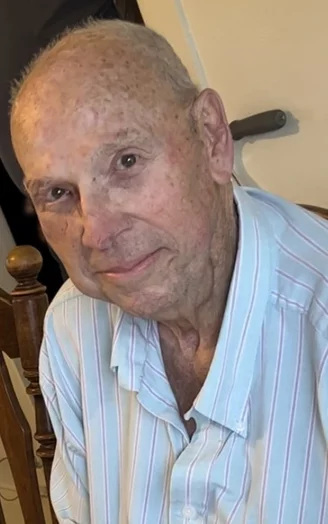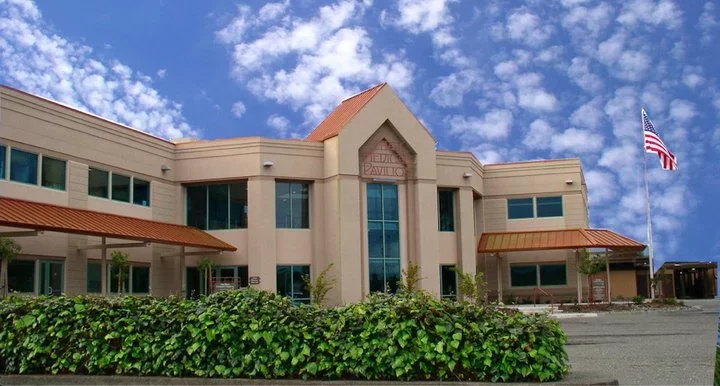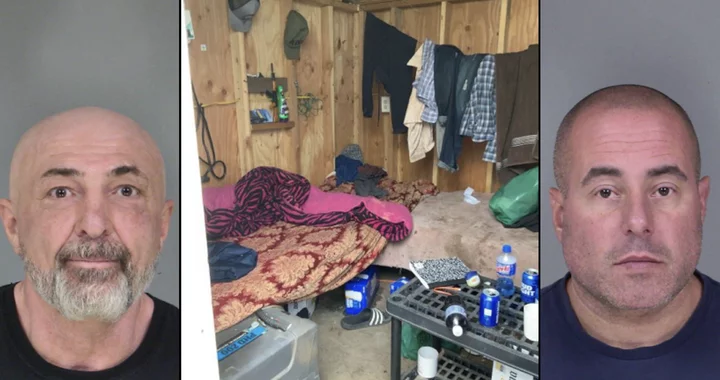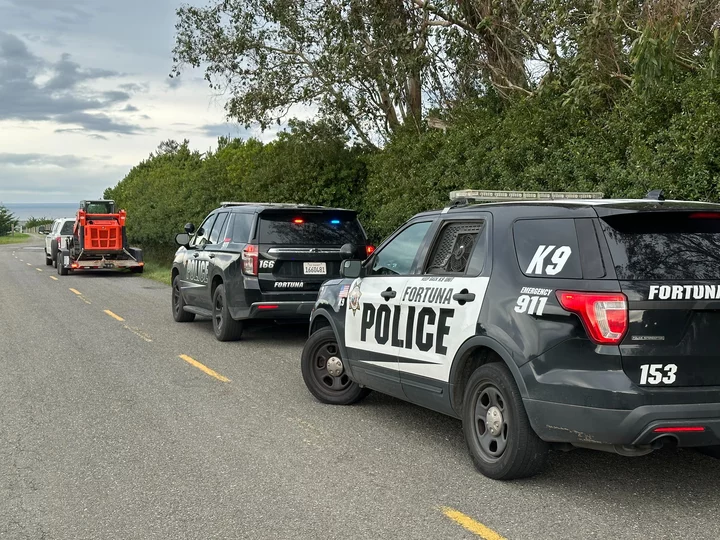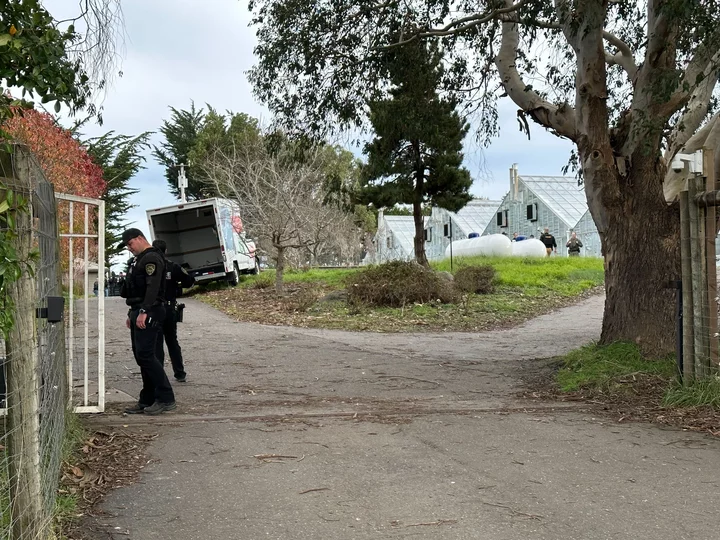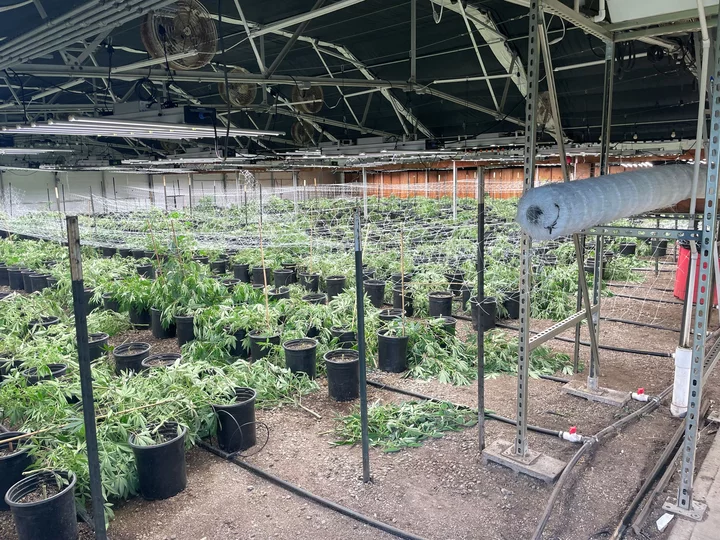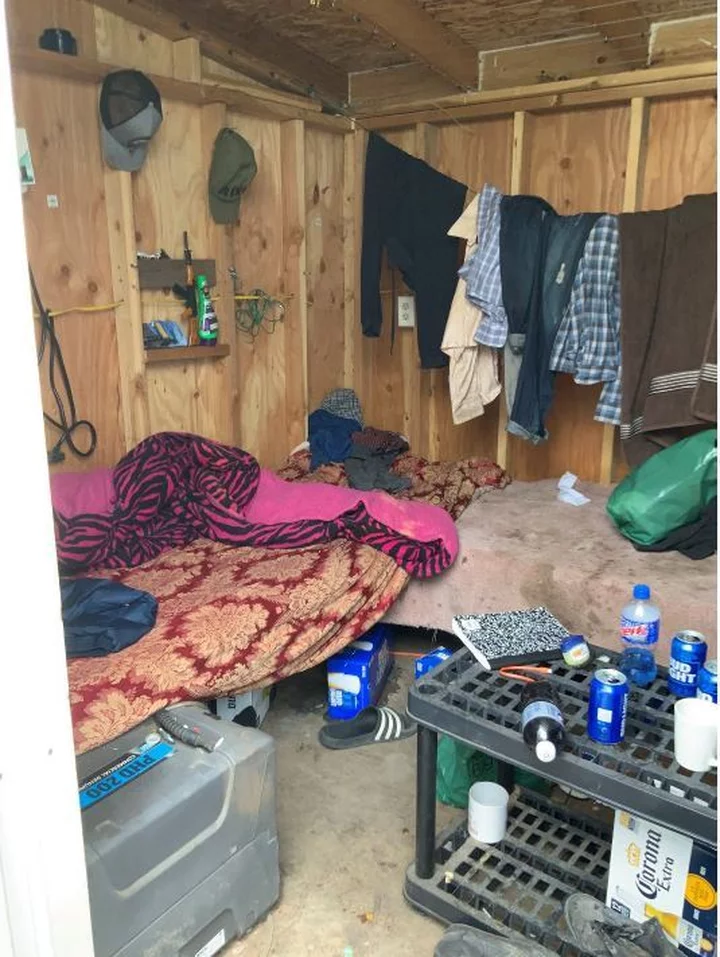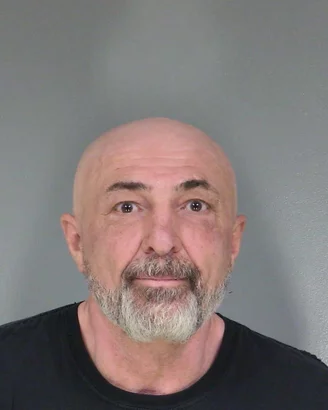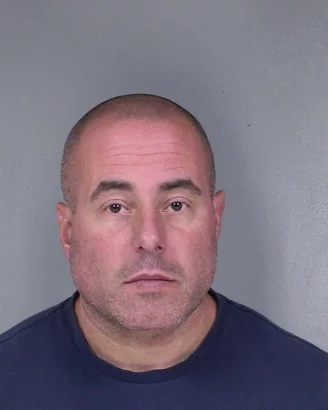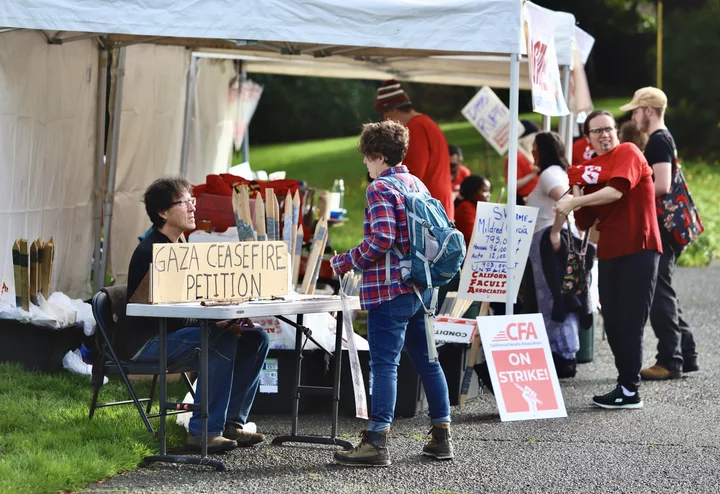OBITUARY: Roy F. Johnson, 1941-2023
LoCO Staff / Tuesday, Jan. 23, 2024 @ 6:56 a.m. / Obits
Roy F. Johnson
July
8, 1941- December 31, 2023
Roy F. Johnson was born in Eureka on July 8, 1941 to George and Bernice (Hemenway) Johnson. He passed away peacefully, December 31, 2023 in the comfort of his home.
Roy attended Washington Elementary, Eureka Jr. High, and later graduated from Eureka High School in 1959. In 1957 Roy met the love of his life, Diana Brouillard, and they later married in 1961. Soon after, they welcomed, and then lost, their first-born son Roy E. Johnson. In 1963 they welcomed their second son Gregg, and then third son Troy in 1966.
Roy worked in construction during his early years at Johnson Structures Inc., a family business, moving houses. He moved houses and structures during the 1964 flood ranging from Ferndale to Rio Dell. He took pride in the many landmarks he helped build; one being the Mad River Fish Hatchery.
While his boys were growing up, their Summers were spent traveling to Allstar baseball games throughout the North State; many times, Roy being the coach. They went onto win several District 26 Tournaments. He had fond memories of the players and the love they shared of the sport.
In 1972 he began working at Humboldt Community Services District and retired in 1995 as a foreman. He took pride in his work ethic and was often found saying, at home and at work, “If you’re bored, I’ll find something for you to do.” He valued the lasting relationships with fellow co-workers and kept in touch with many even after retirement.
Roy reveled in his retirement with wife, Diana. They spent their later years attending concerts, traveling, camping, and held season passes to the Crabs baseball games. Roy enjoyed riding his dune buggy at Fort Baker, and time spent at the hunting camp with his sons and friends. They spent many Summers with family at Dean Creek Resort where they had a seasonal RV spot. In true Roy fashion, everything was a teaching moment. He set up a charge account at the camp store for his granddaughters and all they had to do was say “Charge It To Papa, Please.” He taught them the value of a dollar and was always gloating about how they would not abuse the privilege.
His granddaughters have wonderful childhood memories with their Papa: sleepovers, Shelter Cove just for lunch, Bandon, Oregon for lobster, shoe shopping on Sundays, teaching them to drive, stock car races, and grandparents’ day at school. He never missed a chance to spend quality time with his loved ones.
He and Diana were married for 62 years and his pure love for her never wavered. His granddaughters often said they wanted to find a man that looked at them the way “Papa looked at Nana.”
He leaves behind his wife, Diana, son Troy (Alma) Johnson, daughter-in-law Janie Johnson, brother Brad Johnson, granddaughters Brittney (David) Duran and Ambyr (Tyler) Heckel, great-grandchildren: Kynadi, Austyn, and Keaton. Many cousins, nieces and nephews; to name a few: Laura (Ralph) DuBois, Lisa (David) Boettger, Bruce (Michelle) Brouillard, Starla (Brian) Spencer, Beth Conway, and Larry (Polly) Johnson. A very special thank you to his nieces Lisa and Laura who were an amazing help at the end of his life.
He is proceeded in death by his parents George and Bernice, sons Roy E. Johnson and Gregg Johnson, brother George Johnson, sister Dorthy Doggett, and brother-in-law Louis Brouillard.
A Celebration of Life will be held on February 3, 2024 1 p.m.-4 p.m. at Redwood Acres Wayne Vickers Hall.
###
The obituary above was submitted on behalf of Roy Johnson’s loved ones. The Lost Coast Outpost runs obituaries of Humboldt County residents at no charge. See guidelines here.
BOOKED
Today: 7 felonies, 20 misdemeanors, 0 infractions
JUDGED
Humboldt County Superior Court Calendar: Today
CHP REPORTS
23651 Sherwood Rd (UK office): Trfc Collision-No Inj
927 Mm199 N Dn 9.30 (HM office): Assist with Construction
ELSEWHERE
RHBB: Avelo Airlines to Discontinue Direct Service from ACV to Burbank on Oct. 20
RHBB: Fall Ocean Salmon Fishery Closes Early After Anglers Hit Harvest Guideline
RHBB: Craig H. Missakian Officially Appointed U.S. Attorney for Northern District of California
RHBB: Steve Taylor Memorial Fall Spectacular to Conclude 2025 Racing Season at Redwood Acres Raceway
Chief Exec of Mad River Hospital Unexpectedly Ousted; Talks Continue for Potential Sale to Arizona Company
Ryan Burns / Monday, Jan. 22, 2024 @ 4:05 p.m. / Health Care
Mad River Community Hospital. | File photo.
###
PREVIOUSLY:
- BREAKING: Mad River Hospital Announces That It’s Looking to Sell to Arizona-Based Hospital Company
- Who is Precious Velvet Mayes? TV Producer, Soap Star and Likely Next CEO of Mad River Community Hospital.
- Bounced Paychecks, Bumpy Care and Bankruptcy: Examining the Track Record of Mad River Hospital’s Potential New Owners
###
David Neal, chief executive at Mad River Community Hospital, has been unexpectedly ousted from his position, a member of the hospital’s Community Health Advisory Board confirmed to the Outpost this afternoon.
Managers and other hospital personnel were informed of Neal’s sudden departure at a meeting this morning that left some attendees with more questions than answers.
When asked why Neal might have been let go, retired nurse and Community Health Advisory Board member Nancy Terhorst replied, “I don’t have any idea. It just came out of the blue.”
Douglas Shaw remains the hospital’s chief executive officer, a position that’s distinct from Neal’s former position as chief executive.
Neal’s exit comes eight months after Mad River Community Hospital announced that it wanted to sell itself to an Arizona-based healthcare enterprise called Southwest Healthcare Services, LLC.
Last May the two parties entered into a 90-day due diligence period, with Mad River saying they expected to secure regulatory approvals and finalize the deal by fall of 2023, and yet the hospital remains locally owned. Management has remained circumspect about the status of the proposed deal, with hospital spokesperson Cynthia M. Keene declining to respond to emailed questions on the topic.
In a letter issued to hospital employees last Wednesday, however, Shaw said discussions between Mad River and Southwest continue to take place regularly. But he referred to the proposed sale in terms of “if” rather than “when”:
Southwest is a great organization, and we continue to have meetings regularly to ensure that, if there is an opportunity to work together, it will be mutually beneficial. Unfortunately, things have taken longer than expected; however, even with the difficult market climate hospitals across the nation are currently facing, we see light at the end of the tunnel. As a result, our goal is not to rush into any deal but to take our time to ensure that we get this right for you, our community and for Mad River’s legacy (which is also my father’s legacy).
Shaw added that he will share more information, including an ownership transition date, “if and when it becomes available.”
Meanwhile, a few details have emerged about what Southwest Healthcare Services has been doing since last May:
- Last month a Fresno area radio station reported that a related company called Praise Health attempted to buy a shuttered Hospital in Madera but later abandoned that effort. Its coverage quoted Dede Tsuruoka as a spokesperson for both Praise and Pacific Hospital of the Valley, where Precious Mayes is president and CEO.
- Although Mayes had also been a manager and member of Southwest Healthcare Services, LLC, she was removed from both roles in August, leaving Paul R. Tuft as the only manager and member, according to filings with the Arizona Corporation Commission.
For her part, Terhorst continues to hope for a robust future for Mad River Community Hospital, which is the nearest emergency room for more than 35,000 residents in Arcata, McKinleyville and elsewhere in northern Humboldt County.
“I’m optimistic,” she said. “I don’t think these people are going to take us and run us into the ground.”
She added that Mad River Community Hospital is ready to take on more laboratory work as Providence prepares to close its outpatient labs. Terhorst has urged member hospital officials to talk with the community about the sale and its status, but she says that hospital executives counter that they cannot speak publicly during their due diligence period.
In his letter to employees, Shaw said he and Mad River’s board of directors “remain committed to doing whatever is best for the community and our hospital.”
###
NOTE: Carrie Peyton-Dahlberg contributed much of the reporting to this story.
Iraqi Man Arrested on Dazzling Array of Charges, Including Human Trafficking, Following Table Bluff Road Grow Op Raid
LoCO Staff / Monday, Jan. 22, 2024 @ 2:45 p.m. / Crime
Uonan Uonan AKA “Chicago John” and Nicholas Soares Machado, AKA KGB | HCDTF
Humboldt County Drug Task Force release:
In December of 2021, the Humboldt County Drug Task Force (HCDTF) began receiving information and actively investigating Humboldt Emerald Triangle LLC and the co-conspirators associated with the business. HCDTF Agents believed that the owners/operators of Humboldt Emerald Triangle LLC were running a criminal enterprise in various locations throughout Northern California and Illinois. Over the course of the two-year investigation, HCDTF personnel conducted numerous undercover operations that resulted in the positive identification of the participating members of the Humboldt Emerald Triangle LLC.
As a result of the investigation, warrants for the arrests of Uonan Uonan AKA “Chicago John” (57 years old from Iraq) and Nicholas Soares Machado AKA “KGB” (45 years old from Arcata) were issued. A search warrant was authored and signed for various locations throughout Humboldt County.
On January 19th, 2024, with assistance from the Humboldt County Sheriff’s Office (HCSO), HCSO Marijuana Enforcement Team, Humboldt County District Attorney Investigative Unit, Humboldt County District Attorney Victim Witness Unit, TRIDENT Task Force, Department of Justice, Fortuna Police Department, California Department of Fish and Wildlife, Department of Cannabis Control, Homeland Security, and the California Environmental Protection Agency, HCDTF Agents served search warrants on eight locations throughout Humboldt County.
Upon serving a search warrant in the 2100 block of Table Bluff Road in Loleta, Agents located Uonan Uonan and Nicholas Machado. Uonan and Machado were detained without incident.
Upon searching the residence and the farm on the property, Agents located a pound of non-prescription hydrocodone pills, two AR-15 non serialized firearms, two AR-9 non serialized firearms, one Smith & Wesson semi-automatic pistol, one Grendel semi-automatic pistol, various ammunition, and 30 round magazines. Despite Humboldt Emerald Triangle LLC having the proper cultivation and distribution licenses, 5,677 marijuana plants were found to be growing illegally at the farm as well as 16 pounds of processed marijuana, 192 pounds of marijuana shake, and 42 pounds of BHO wax. Therefore, the marijuana plants were destroyed on scene and the processed marijuana, shake and wax were seized and booked for destruction. The owners/operators of Humboldt Emerald Triangle LLC were also violating their distribution license by selling and transporting marijuana outside the state of California.
Subsequent search warrants were then served at seven other locations in the cities of Arcata, Eureka, and Hydesville. Financial documentation, indicia and other corroborating information was located at these locations. A sawed-off shotgun was also located at the residence searched in Arcata.
As a result of the search warrants, the following items were seized for asset forfeiture purposes:
- $123,846.25 in U.S. Currency
- 2023 GMC Sierra 1500 Black Widow Edition
- 2021 GMC Sierra 2500 Denali
- 2023 GMC Yukon XL
- 2017 Polaris Sportsman ATV
- 13 watches
- Various jewelry items
This investigation also focused on potential labor trafficking. Humboldt Emerald Triangle LLC was operating under a business plan wherein they unlawfully employed undocumented foreign individuals. These undocumented workers were forced to work in unfavorable and hostile conditions. They were also forced to live in small sheds on the farm that did not have proper utilities. These workers were underpaid and often had their wages withheld. Throughout the investigation, evidence was corroborated that a juvenile was also being unlawfully employed by Humboldt Emerald Triangle LLC which is a felony violation of HS11359(D).
# # #
Uonan UONAN was arrested and booked without bail at the Humboldt County Correctional Facility on the following charges:
- PC186.2- Criminal Profiteering
- PC186.10- Money Laundering
- PC487A- Grand Theft
- PC182- Conspiracy
- PC236.1- Human Labor Trafficking
- HS11359- Possession of Marijuana for Sale
- HS11366.5- Maintaining a Drug House
- PC30605(A)- Possession of an Assault Weapon
- PC29180(G)- Manufacturing a Firearm
- PC30600(A)- Manufacturing an Assault Weapon
Nicholas Soares MACHADO was arrested and booked without bail at the Humboldt County Correctional Facility on the following charges:
- PC33215- Manufacture a Short-Barreled Shotgun
- PC182- Conspiracy
- HS11359- Possession of Marijuana for Sale
This investigation remains open and active. HCDTF anticipates charging additional co-conspirators and adding further charges as evidence presents itself. The Humboldt County Drug Task Force encourages any prior employees of Humboldt Emerald Triangle LLC to contact the HCDTF at 707-267-9976 if they are interested in providing further information pursuant to this investigation.
WHOA: Rep. Huffman’s Office Teases $426 Million Federal Grant for Offshore Wind Terminal, to be Announced Tomorrow
LoCO Staff / Monday, Jan. 22, 2024 @ 2:04 p.m. / Infrastructure
From the Office of Rep. Jared Huffman:
On Tuesday, January 23, at 4:30 pm PT, Representative Jared Huffman (D-San Rafael) and representatives from the Humboldt Bay Harbor, Recreation and Conservation District will hold a press conference to announce a $426,719,810 federal grant for its proposed Heavy Lift Marine Terminal Project which will support offshore wind in Humboldt County. The project will construct a modern marine terminal primarily for the transport, import, staging, preassembly, final assembly, launch, in-water construction, and long-term maintenance of floating offshore Wind Turbine Devices (WTDs). It also includes environmental protection measures such as an eco-shoreline.
The grant, allocated through the U.S. Department of Transportation’s INFRA Grant Program, was made possible in part by the Infrastructure Investment and Jobs Act, which Rep. Huffman helped get passed in Congress.
The INFRA Grant Program awards competitive grants for multimodal freight and highway projects of national or regional significance to improve the safety, efficiency, and reliability of the movement of freight and people in and across rural and urban areas. The funding opportunities are awarded on a competitive basis for surface transportation infrastructure projects — including highway and bridge, intercity passenger rail, railway-highway grade crossing or separation, wildlife crossing, public transportation, marine highway, and freight projects, or groups of such projects — with significant national or regional impact, or to improve and expand the surface transportation infrastructure in rural areas.
###
PREVIOUSLY:
Eureka Street Art Festival Organizers Announce This Will Be Event’s Final Year*
LoCO Staff / Monday, Jan. 22, 2024 @ 1:43 p.m. / Art
Scenes from the 2023 Eureka Street Art Festival
Eureka Street Art Festival release:
The Eureka Street Art Festival (ESAF) is happy to announce their seventh annual Festival dates: July 29th - August 2nd, 2024. This year’s Festival will be taking place city-wide - decorating walls throughout Eureka.
After seven awesome years of adding color to the city, the organizers have decided that this will be the last year of the Eureka Street Art Festival…at least for now. The Festival takes an immense amount of work and money to put on each year, and the three organizers are ready to move on to new projects. Through the Festival, over 100 new murals have been added to Eureka. Just like the murals, this Festival was never designed to last forever.
GET INVOLVED:
ESAF has some exciting projects in store for the final year: big walls; slugs; repainting some of your favorite Eureka murals. But we need your help to make this year a success - we are seeking walls to paint murals on! They can be big or small (including retaining walls, doors, and garage doors), and be located anywhere within the City. Wall owners are asked to contribute $10/square foot towards the creation of their mural. If you’re interested, please email us by February 1st: eurekastreetartfestival@gmail.com
We are also seeking funding - visit eurekastreetartfestival.com to make a donation or become a business sponsor.
Artists will be invited to participate in this final year (as opposed to having an open artist application, like in previous years). Any artist who has submitted an application in the past will be considered.
Let’s work together to make the final year of the Eureka Street Art Festival a great one!
PREVIOUSLY:
CHP Provides Details on Last Night’s Fatal Highway 101 Head-on Collision South of Fortuna
LoCO Staff / Monday, Jan. 22, 2024 @ 12:28 p.m. / Traffic
California Highway Patrol release:
On January 21, 2024, at approximately 2237 hours, CHP Humboldt Communications Center (HCC) received a report of a Toyota truck traveling wrong-way, northbound in the southbound lanes of US 101. At approximately 2243 hours, HCC received a report of a head-on traffic crash in the southbound lanes of US 101 at Metropolitan Road. After the crash, both vehicles were disabled and became fully engulfed in flames.
Emergency personnel responded to the scene and located a 2015 Toyota Tacoma and a 2010 Mercedes Benz C300 blocking the lanes. An unidentified driver was located inside the Toyota whom was determined by medical personnel on scene to be deceased. An unidentified driver and an unidentified passenger were located inside the Mercedes Benz whom were determined by medical personnel on scene to be deceased.
At this time, it is unknown exactly where the the wrong-way Toyota entered US 101. It is also unknown at this time if drugs and/or alcohol contributed to the cause of this crash.
The CHP Humboldt Area office is continuing its investigation and asks anyone who may have additional information to contact the California Highway Patrol at 707-822-5981.
(PHOTOS/VIDEO) Cal Poly Humboldt on Strike
Stephanie McGeary / Monday, Jan. 22, 2024 @ 11:35 a.m. / Labor
Photos/video by Andrew Goff, unless otherwise noted.
PREVIOUSLY:
###
The mood is lively on the corner of 14th and LK Wood this morning, as hundreds of CSU faculty and supporters gather to picket for better working conditions. They’re marching and chanting along the street to a soundtrack of rebellious rock ballads.
Nicola Walters, a Cal Poly Humboldt lecturer and a membership and organizing chair of the California Faculty Association, told the Outpost that some strikers have been here since 7:30 this morning and the crowd has been building since then.
The association has many demands, including wage increases and an increase in paid family leave time for new parents, who, Walters said, currently only get 30 days of paid leave to care for a new child.
Nicola Walters. Photo by Stephanie McGeary.
The university has threatened to garnish pay for those participating in the strike, Walters said.
“It’s emotional” Walters said. “It’s scary for our faculty to be looking at the end of the month and wondering if they’re going to be able to make rent. It’s unimaginable that the CSU pays us so little that losing a week without pay would make people homeless.”
Holly Rae, a grad student, was marching in solidarity this morning at a second picket line near Library Circle. Rae said she’s joining the strike to support her professors, who she sees struggle due to unfair working conditions.
On the path to become an educator herself, Rae is also concerned for her own future and wants to feel confident that she’ll be going into a field where she won’t have to constantly struggle to make ends meet.
“I’m here because I too hope to someday earn a living wage and have fair working conditions,” Rae said.
More photos of the today’s strike below. A press release from the CSU system can be found at this link.

